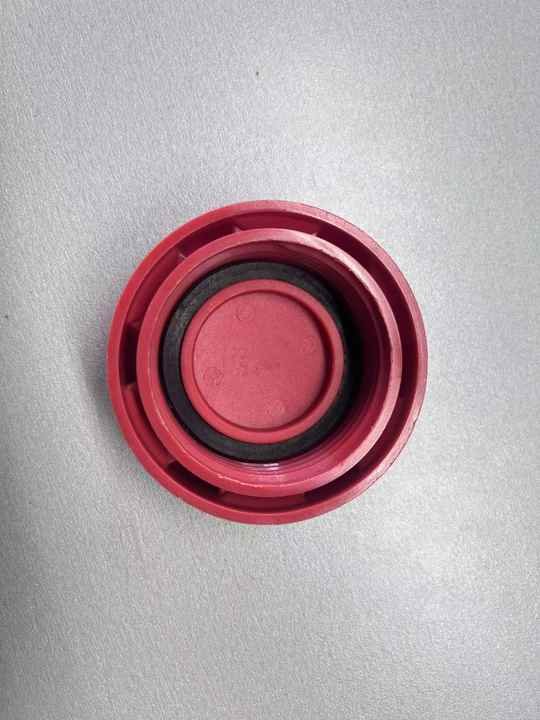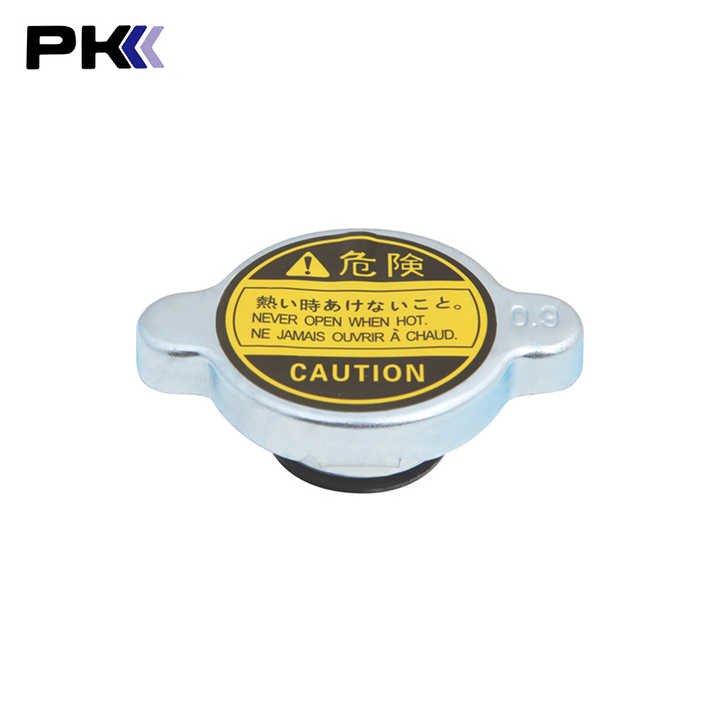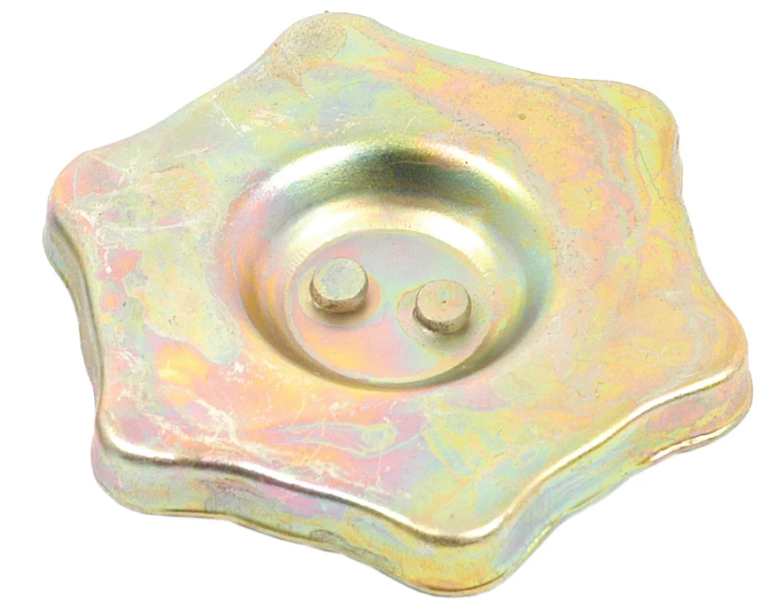Are Oil Filler Caps Universal?
In automotive maintenance, the oil filler cap (Oil Filler Cap) is a crucial yet often overlooked component. It plays an essential role in sealing the oil tank, preventing contamination, and directly impacts engine performance and longevity. However, many car owners face a common question when replacing their oil cap: Are oil filler caps universal? Today, we’ll explore this question and help you understand oil cap compatibility, how to choose the right one, and its potential impact on your vehicle.
What Is an Oil Filler Cap?
The oil filler cap is the part that covers the opening of an engine oil tank. Its primary function is to prevent dust, water, and debris from entering the oil tank, keeping the oil clean. Additionally, it helps prevent oil leakage or evaporation, and maintains the pressure balance within the oil tank. Some modern oil caps even have ventilation holes to ensure proper internal pressure.
Are Oil Filler Caps Universal?
The simple answer is: not exactly. While some oil caps on the market may be considered “universal,” this doesn’t mean they fit every vehicle or piece of equipment. The compatibility of an oil cap depends on several factors:
| Part # | Product # | Description | Type | Cam Type | Locking | Neck Diameter |
| 31061 | 74100061 | 31061 OIL CAP | Oil Filler/Breather Cap | Push Plug | false | 1.5 mm |
| 31064 | 74100064 | 31064 OIL CAP | Oil Filler/Breather Cap | Cam Twist | false | 1.16 mm |
| 31066 | 74100096 | 31066 OIL CAP | Oil Filler Cap | Cam Twist | false | 1.19 mm |
| 31072 | 74100169 | 31072 OIL CAP | Oil Filler/Breather Cap | Cam Twist | false | 1.16 mm |
| 31081 | 74100257 | 31081 OIL CAP | Oil Filler Cap | Threaded | false | 1.47 mm |
| 31083 | 74100259 | 31083 OIL CAP | Oil Filler Cap | Threaded | false | 1.25 mm |
| 31098 | 74100039 | 31098 OIL CAP | Oil Filler Cap | Cam Twist | false | 1.28 mm |
| 31103 | 74100497 | 31103 OIL CAP | Oil Filler Cap | Cam Twist | false | 1.53 mm |
| 31109 | 74100518 | 31109 OIL CAP | Oil Filler Cap | Threaded | false | 1.25 mm |
| 31115 | 74100073 | 31115 OIL CAP | Oil Filler Cap | Threaded | false | 1.25 mm |
| 31118 | 74100019 | 31118 OIL CAP | Oil Filler Cap | Threaded | false | 1.22 mm |
| 31119 | 74100020 | 31119 OIL CAP | Oil Filler Cap | Threaded | false | 1.66 mm |
| 31279 | 74100136 | 31279 OIL CAP | Oil Filler Cap | Cam Twist | false | 1.2 mm |
| 31280 | 74100272 | 31280 OIL CAP | Oil Filler Cap | Cam Twist | false | 1.65 mm |
| 31281 | 74100273 | 31281 OIL CAP | Oil Filler Cap | Cam Twist | false | 1.5 mm |
| 31284 | 74100276 | 31284 | Oil Filler Cap | Threaded | false | 1.25 mm |
| 31285 | 74100277 | 31285 | Oil Filler Cap | Threaded | false | 1.47 mm |
| 31291 | 74100291 | 31291 OIL CAP | Oil Filler Cap | Cam Twist | false | 1.5 mm |
| 31295 | 74100233 | 31295 OIL CAP | Oil Filler Cap | Cam Twist | false | 1.32 mm |
| 31297 | 74100237 | 31297 DIPSTICK | Oil Filler Cap | Dipstick | false | 1.87 mm |
| 31299 | 74100813 | 31299 OIL FILTER CAP | Oil Filler Cap | Cam Twist | false | 1.1875 mm |
1. Oil Cap Size and Thread Type
The size and internal threading of the oil cap are the most important factors determining its compatibility. Different brands and models of vehicles may have different oil tank openings in terms of size and design. Therefore, oil caps are not universally compatible. Every oil tank opening has a specific size and thread type to ensure a proper seal.
- Thread Type: Oil caps from different vehicles may feature different thread types, such as round or square threads. Even if the appearance is similar, the threading might not match across models.
- Size: The diameter and height of the oil cap need to be compatible with the size of the oil tank opening to ensure a secure seal. If the oil cap is too large or too small, it could result in oil leakage or contamination.
2. Material Differences
Oil caps are typically made from metal or plastic. While material differences may not always affect compatibility, using a different material may impact the cap’s sealing efficiency and durability. If you switch to a non-original material, you could experience issues such as insufficient sealing or faster wear and tear.
3. Specialized Oil Caps
With advancements in technology, many modern vehicles come equipped with oil caps that feature specialized designs. For example, high-performance or luxury cars might have oil caps with pressure regulation systems or ventilation holes to manage the internal pressure of the oil tank. In such cases, a universal oil cap may not function correctly, and a specialized cap designed for that particular model would be necessary.
4. Brand and Model Compatibility
Oil caps can also vary in design and specifications even within the same vehicle make and model, depending on the production year. Therefore, even a “universal” oil cap might not be compatible with all vehicles. It’s crucial to ensure that the oil cap you choose matches the brand, model, and production year of your vehicle.
How to Choose the Right Oil Cap?
When selecting the correct oil cap, here are a few important factors to consider:
1. Check the Vehicle Manual
The most reliable way to choose the right oil cap is by checking your vehicle’s user manual. It usually specifies the recommended oil cap type and specifications. If you’re unsure whether an oil cap is compatible, the manual provides clear guidance.
2. Confirm Size and Thread Type
If you need to purchase a replacement oil cap, be sure to check the size of the oil tank opening and the type of threads required. You can measure the opening or provide your vehicle details to an auto parts store for assistance in selecting the correct cap.
3. Choose a Quality Oil Cap
Even if an oil cap is labeled as “universal,” ensure it is of high quality. Low-quality oil caps may not provide an adequate seal, leading to oil leakage or contamination. Choosing a reputable brand or OEM (Original Equipment Manufacturer) part will help you avoid potential issues.
4. Consider Special Features
As mentioned earlier, some vehicles, particularly high-performance or luxury models, may require specialized oil caps. If your car belongs to such a category, it’s important to choose an oil cap that meets the original design specifications to ensure optimal performance.
Common Oil Cap Issues
- Oil Cap Looseness or Difficulty Tightening If the oil cap cannot be properly tightened or keeps loosening, this could be due to worn threads either on the oil cap or the oil tank opening. It’s essential to replace the oil cap and inspect the oil tank opening for any damage.
- Oil Leakage or Stains If you notice oil leaking or stains around the oil cap, the seal ring might be damaged, or the cap may not be properly tightened. Check the seal ring for wear and replace it if necessary.
- Cracked or Damaged Oil Cap Due to heat, prolonged use, or impact, an oil cap might crack or become damaged. In this case, you should replace the oil cap immediately to avoid oil leaks or contamination.
While there are some “universal” oil filler caps available on the market, not all oil caps are universal. The compatibility of an oil cap depends on several factors, including size, thread type, material, and special design features. To ensure proper function and engine health, it’s always best to select an oil cap that is compatible with your specific vehicle model. Regularly checking and maintaining your oil cap can help prevent leaks, contamination, and engine performance issues, ensuring that your vehicle remains in optimal condition.





